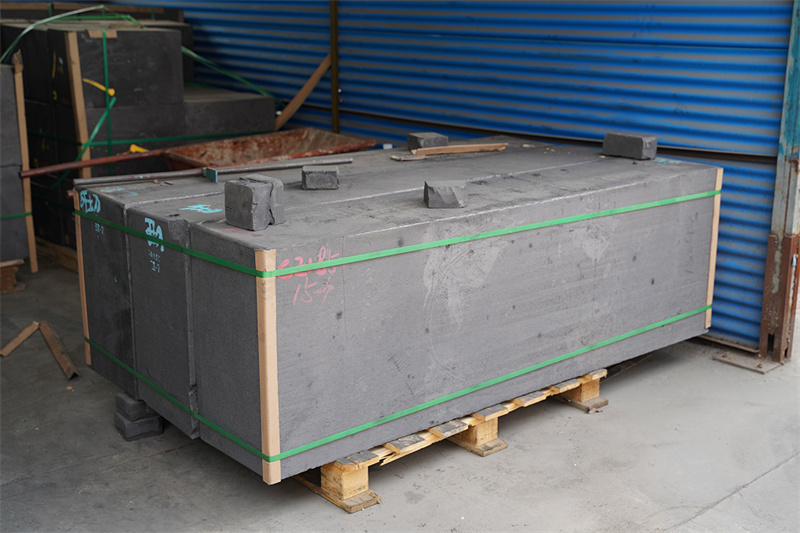Graphite, a crystalline form of carbon, is a versatile material with a wide range of properties that make it indispensable across various industries. Its unique combination of physical, chemical, and electrical properties allows it to be used in applications ranging from simple writing tools to complex high-tech devices. This article explores the properties of graphite that contribute to its utility in different industries.
Structure and Basic Properties
Graphite has a layered structure consisting of rings of six carbon atoms arranged in widely spaced horizontal sheets. This hexagonal arrangement gives graphite its distinct properties:
Softness and Lubricity: The weak van der Waals forces between the layers allow them to slide over each other easily, making graphite an excellent lubricant. Its softness (Mohs hardness of 1-2) also contributes to its use in applications requiring low friction.
Electrical Conductivity: Graphite is an excellent conductor of electricity due to the presence of free electrons within its layers. This property is crucial for its use in electrodes, batteries, and other electrical applications.
Thermal Conductivity: Graphite's ability to conduct heat efficiently makes it valuable in high-temperature applications such as refractories and heat exchangers.
Chemical Inertness: Graphite is chemically inert and resistant to most acids and alkalis, which makes it suitable for use in corrosive environments.
High Melting Point: Graphite can withstand extremely high temperatures without melting, making it ideal for use in high-temperature industrial processes.
Industrial Applications
1. Electronics and Electrical Industry
Graphite's electrical conductivity and thermal management properties make it indispensable in the electronics industry. It is used in:
Electrodes: Graphite electrodes are used in electric arc furnaces for steel production and in the manufacturing of silicon and other materials.
Batteries: Both natural and synthetic graphite are used as anode materials in lithium-ion batteries, which power electric vehicles, portable devices, and renewable energy storage systems.
Brushes for Electric Motors: Graphite brushes are used in electric motors to conduct current between stationary wires and rotating parts.
2. Refractories and High-Temperature Applications
Graphite's high melting point and thermal conductivity make it ideal for use in refractory materials, which are used to line furnaces, kilns, and reactors. It is also used in:
Crucibles: Graphite crucibles are used for melting and refining metals due to their ability to withstand high temperatures and corrosive environments.
Foundry Facings: Graphite is applied as a mold wash in foundries to ease the separation of cast objects from molds.
3. Lubricants
Graphite's lubricating properties are utilized in various industrial applications where traditional lubricants fail, such as:
High-Temperature Lubricants: Graphite is used as a dry lubricant in high-temperature environments where oil-based lubricants would decompose.
Anti-Seize Agents: It is used to prevent the seizing of parts in machinery operating under extreme conditions.
4. Automotive Industry
Graphite is used in the automotive industry for:
Brake Linings: Amorphous and flake graphite are used in brake linings to provide lubrication and reduce wear.
Clutches: Graphite helps in modulating friction in clutches, enhancing performance and durability.
5. Nuclear Industry
Graphite's ability to absorb neutrons makes it valuable in nuclear reactors. It is used as a moderator to slow down neutrons, facilitating controlled nuclear reactions. Graphite's high purity and stability under radiation make it suitable for this application.
6. Sports Equipment
Graphite-reinforced polymers are used to manufacture lightweight and strong sports equipment such as tennis rackets, golf clubs, and bicycle frames. The material's high strength-to-weight ratio and durability enhance performance in sports applications.
7. Art and Writing Materials
Graphite's ability to leave marks on paper makes it the primary material for pencils. The mixture of graphite and clay provides the desired hardness and smoothness for writing and drawing.
Conclusion
Graphite's unique properties, including its softness, electrical and thermal conductivity, chemical inertness, and high melting point, make it a versatile material used across various industries. From traditional applications like pencils and lubricants to advanced uses in electronics, automotive, and nuclear industries, graphite continues to be an essential material in modern technology and industrial processes. Its diverse applications underscore the importance of understanding and harnessing its properties to innovate and improve products and processes in multiple fields.



_853.jpg)
_867.jpg)
